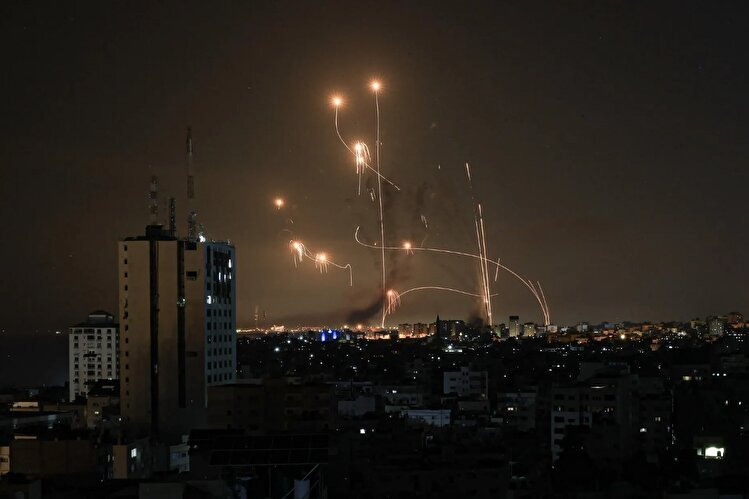National Security Crisis in America; Empty Loaders After Firing Clusters of Rage
TEHRAN (Defapress) - The 12-day war between Iran and the Zionist regime, which took place from June 13 to June 25, 2025, was one of the most significant military conflicts in world history. This war, which began with Israel's attacks on Iran, was followed by extensive missile retaliation from Iran against the Zionist regime and the United States.

Reports published so far regarding the imposed 12-day war between Iran and the Zionist regime clearly show that the U.S. expended a considerable portion of its advanced interceptor missiles in this war, particularly missiles from the THAAD system, imposing exorbitant and heavy costs on the Pentagon.
According to a report by the Jewish Institute for National Security of America (JINSA), the U.S. had approximately 632 THAAD interceptor missiles before June 13 (the day Israel attacked Iran). Based on the latest calculations by this institute, considering the rate of consumption and missile deliveries, only about 540 of these missiles remain.
The JINSA report indicates that two Patriot missile defense systems protecting Al Udeid Air Base (the largest U.S. military base in the Middle East, housing 10,000 personnel) used around 30 Patriot missiles to counter 14 Iranian ballistic missiles fired in response to the U.S. aggression against Iran's nuclear facilities on June 23. Each of these missiles is valued at $3.7 million, totaling a $111 million bill for the Pentagon.
On the other hand, the U.S. Navy fired approximately 80 SM-3 interceptor missiles, each costing $37 million, along with a significant number of SM-2 and SM-6 missiles. The total cost of U.S. missile defense in this war exceeds $3 billion.
JINSA further stated in its report that the U.S. has so far used 14% of its global stockpile of THAAD interceptors. As a result, the U.S. THAAD system, due to the "insufficient" capacity of Israel's Arrow interceptor system, handled nearly half of all interceptions. Accordingly, given the current production rate of these defense missiles, replacing the THAAD missiles used in the 12-day war will take between 3 to 8 years.
The report also adds that the production rate of Patriot missiles is higher than that of THAAD missiles. However, since the U.S. has sent a large number of these missiles to Ukraine, it is unclear how many remain in stock. The report warns that if the U.S. and Israel do not quickly replenish their missile stockpiles (especially THAAD and Patriot), they will face a shortage of defense systems in the next crisis.
At the end, the report emphasizes that Iran's extensive missile attacks exposed vulnerabilities in the air defense systems of Israel and the U.S., which will provide more opportunities for Iran and other countries opposed to Israel and the U.S. to exploit.
On the other hand, the weakness and inadequacy of U.S. defense systems, along with the high costs of weaponry, have led American military experts to push the country toward strengthening its defense systems and revising its defense doctrine. In this regard, General "Thomas Bergeson," former commander of CENTCOM, acknowledged in remarks that the U.S. and its allies should invest in and focus on non-kinetic defense systems (which neutralize threats without explosive force), as these methods are far more cost-effective in countering future attacks.
The former CENTCOM commander stated that extensive operational testing is underway on cheaper alternatives to multi-billion-dollar missiles to counter relatively inexpensive missiles or drones. Any electromagnetic disruption capability, microwave laser, or electromagnetic pulse (EMP) that can interfere with a guidance system or part of a specific system could be a lower-cost option. Instead of one expensive missile, you could have hundreds or even thousands of rounds at a much lower cost.
Finally, the imposed 12-day war demonstrated that modern conflicts involving advanced missiles can impose massive financial and strategic costs. The U.S. spending over $3 billion on missiles, along with a quarter reduction in its THAAD stockpile, has created a serious challenge to its defense capabilities. In contrast, Iran, at a lower but impactful cost, has managed to inflict significant damage on Israel.
